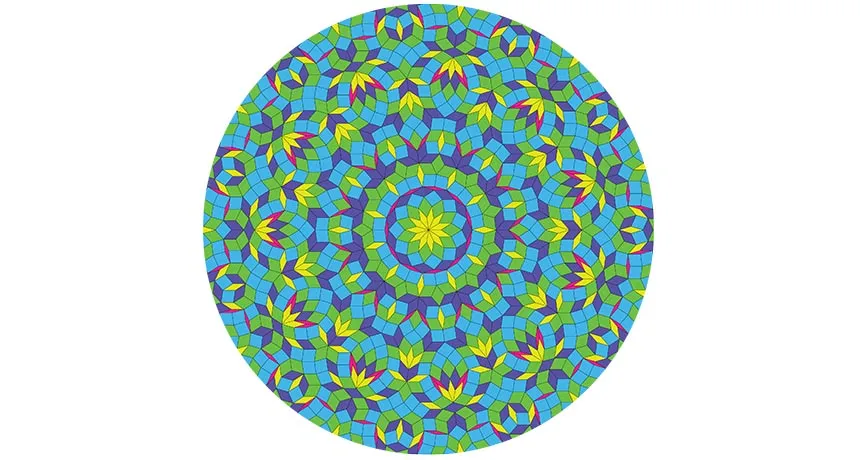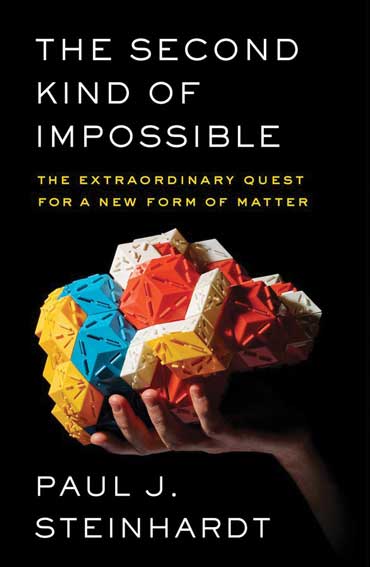
AN ELEGANT ASYMMETRY The atoms in a quasicrystal are arranged something like the tiles in this pattern: They form shapes that have order but no repetition. Paul Steinhardt studied such tiling patterns to understand how quasicrystals could be constructed.
P. Steinhardt








